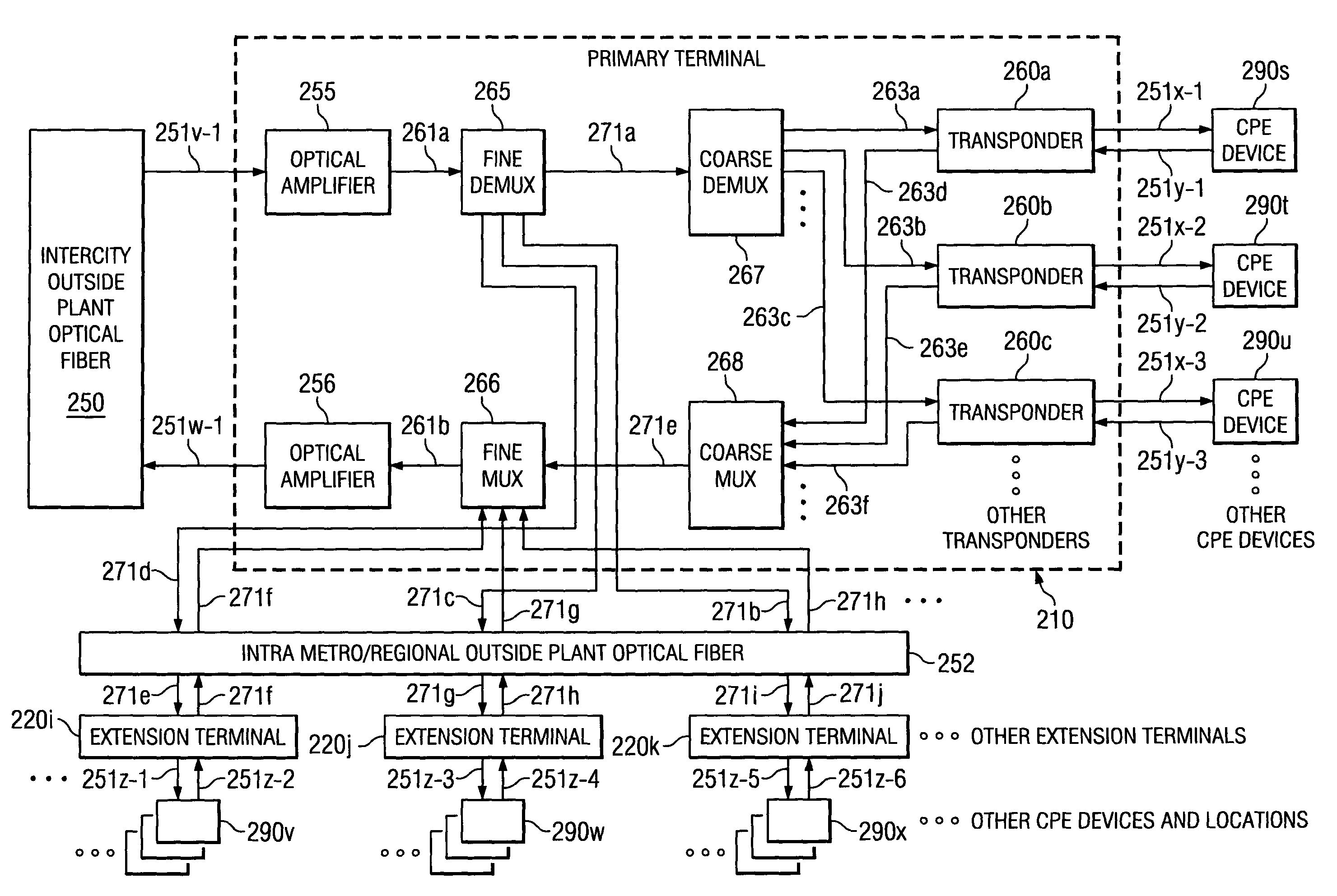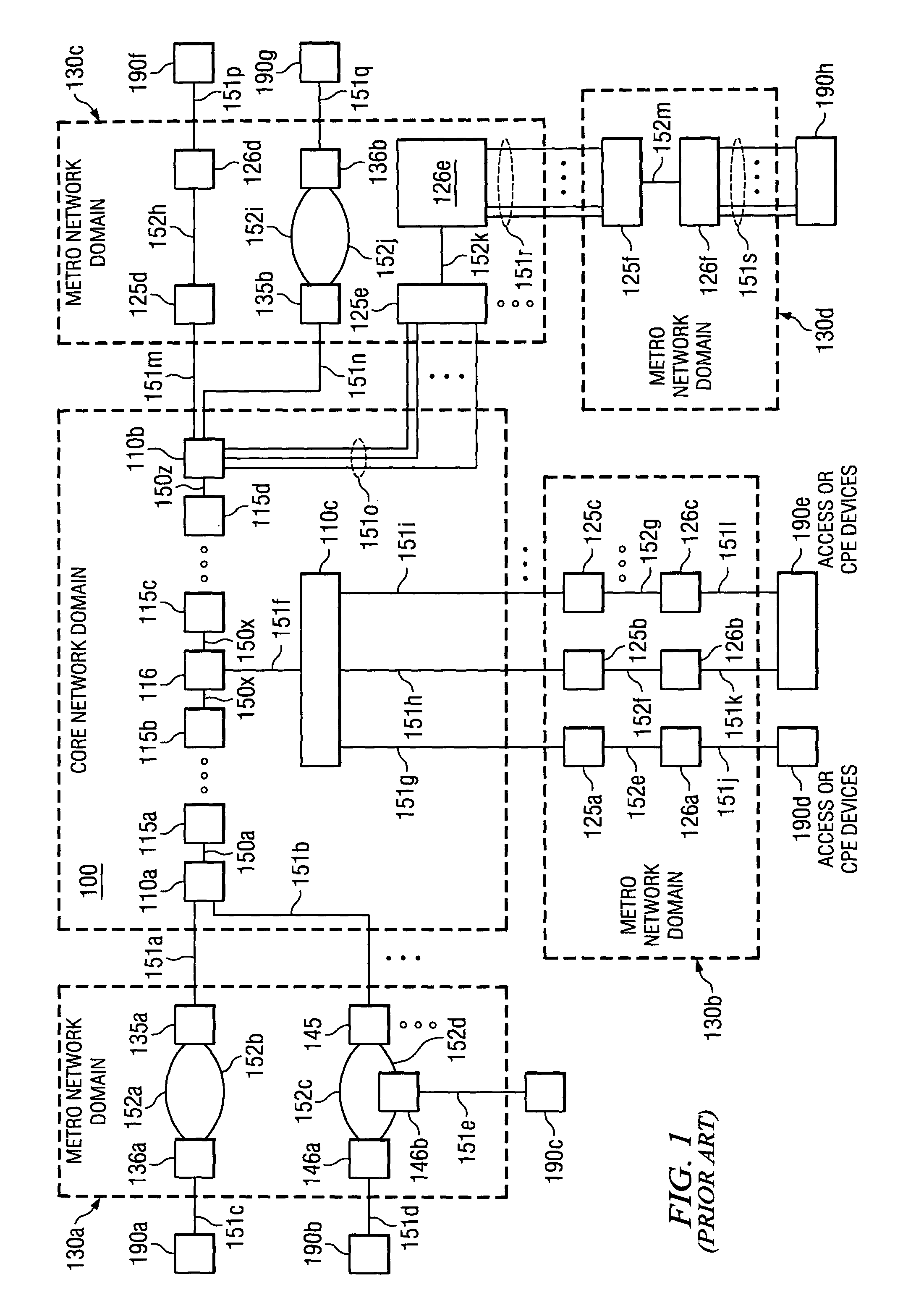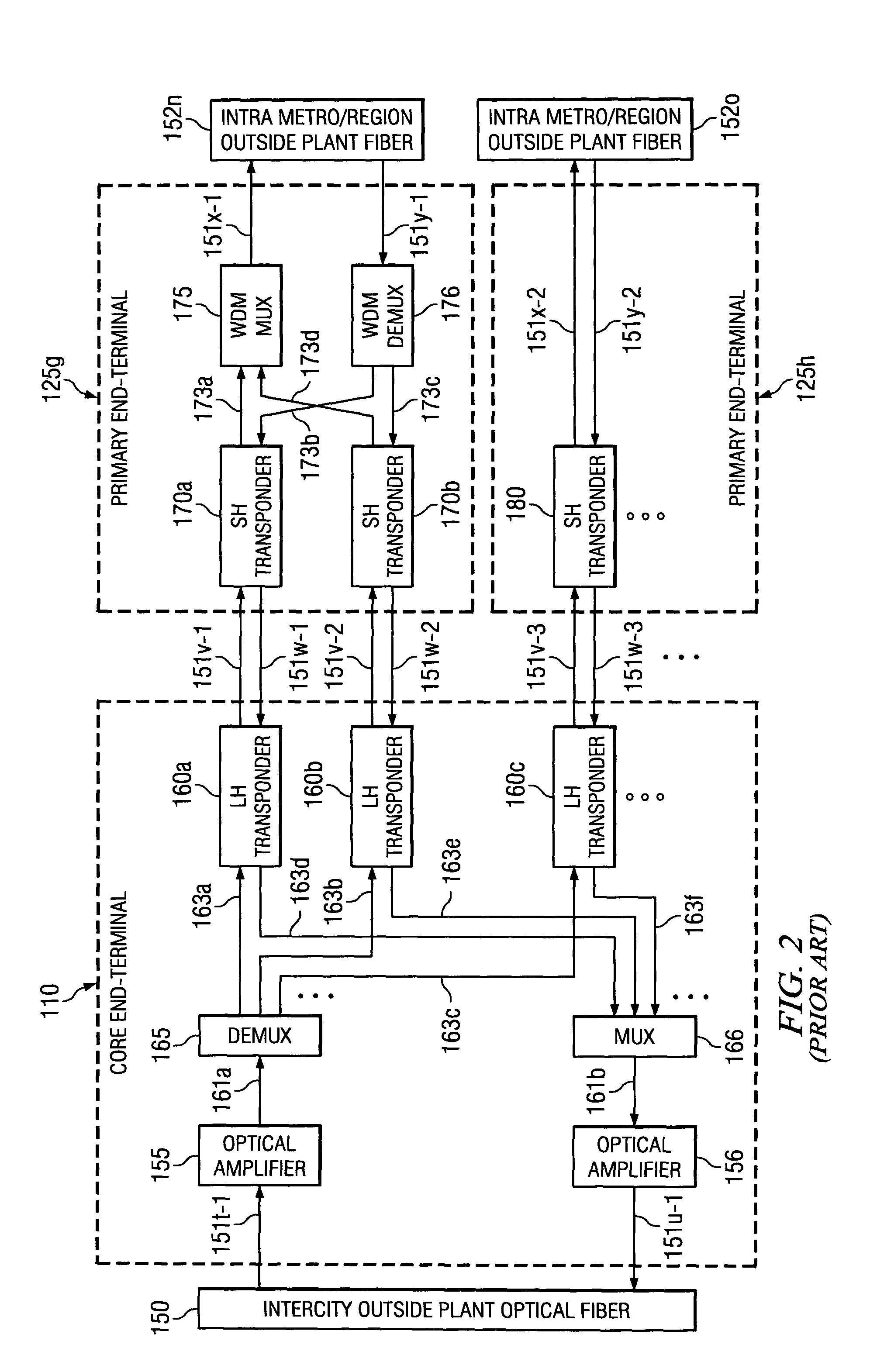Distributed terminal optical transmission system
a technology of optical transmission system and distribution terminal, which is applied in the field of distributed terminal optical transmission system, can solve the problems of communication service, cost of maintaining multiple sets of optical data networking equipment, and limitations of prior art systems
- Summary
- Abstract
- Description
- Claims
- Application Information
AI Technical Summary
Benefits of technology
Problems solved by technology
Method used
Image
Examples
Embodiment Construction
[0028]In the descriptions that follow, like parts are marked throughout the specification and drawings with the same numerals, respectively. The drawing figures are not necessarily drawn to scale and certain figures may be shown in exaggerated or generalized form in the interest of clarity and conciseness. Reference of an A-Z signal or direction means from the left side of the drawing to the right side of the drawing while Z-A means from the right side to the left side. The A-Z or Z-A designation is used for illustrative purposes only.
[0029]The prior art as it relates to optical transport networking between domains is shown in FIG. 1 and FIG. 2. Referring to FIG. 1, an optical transport network may be composed of several domains: a core network 100 with a geographic extent of typically between 100 km and 1500 km and a plurality of metro network domains 130a-d with geographic extents typically of 3 km to 100 km.
[0030]Customer premise equipment (CPE) 190a-h are considered to be outsid...
PUM
 Login to View More
Login to View More Abstract
Description
Claims
Application Information
 Login to View More
Login to View More - R&D
- Intellectual Property
- Life Sciences
- Materials
- Tech Scout
- Unparalleled Data Quality
- Higher Quality Content
- 60% Fewer Hallucinations
Browse by: Latest US Patents, China's latest patents, Technical Efficacy Thesaurus, Application Domain, Technology Topic, Popular Technical Reports.
© 2025 PatSnap. All rights reserved.Legal|Privacy policy|Modern Slavery Act Transparency Statement|Sitemap|About US| Contact US: help@patsnap.com



